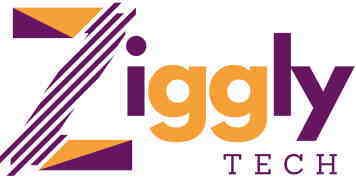Introduction:
You might have heard the phrase “Don’t judge a book by its cover.” Well, sorry to burst your bubble, but in the world of content marketing, that doesn’t hold true. The cover of your book in this case is the title of your blog post. It’s the first thing readers see before deciding whether to read your article or skip it. And it’s not just about attracting readers, but also about ranking on Google. So, it’s crucial to master the art of title writing to attract readers and rank on Google.
Section 1: What is Title Writing?
Title writing is one of the most important parts of any content marketing strategy. It’s the process of creating an attention-grabbing title for your blog post that not only attracts readers but also ranks on Google.
Section 2: The Importance of Title Writing
The title of your blog post is the first thing readers see, and it’s what determines whether they’ll click on your link or not. If your title doesn’t grab their attention, they won’t bother reading your article. Moreover, the title also plays a significant role in ranking on Google. The catchy title that includes relevant keywords can help your article rank higher on Google search results.
Section 3: Guidelines for Title Writing
– Keep it Short and Sweet: Your title should be short and to the point, ideally under 60 characters.
– Use Keywords: Incorporate relevant keywords in your title to help your article rank higher on Google.
– Be Unique and Specific: Avoid using generic titles and opt for unique and specific ones that reflect the content of your article.
– Use Numbers and Lists: Titles with numbers and lists tend to perform better as they give the readers a clear idea of what to expect from the article.
– Be Attention-Grabbing: Use powerful and action-oriented words to catch the reader’s attention.
– Use Emotional Triggers: Titles that evoke emotions such as curiosity, excitement, or urgency are more likely to be clicked.
– Test Different Titles: Experiment with different titles and choose the one that performs best.
Section 4: The Dos and Don’ts of Title Writing
Do’s:
– Incorporate relevant keywords
– Keep it short and specific
– Use numbers and lists
– Be attention-grabbing
– Use emotional triggers
Don’ts:
– Use clickbait titles
– Make false claims
– Use too many keywords
– Be too vague
– Use generic or overused titles
Section 5: Examples of Effective Titles
1. “10 Powerful Tips to Boost Your Productivity at Work”
2. “How to Create a Killer Social Media Strategy”
3. “5 Surprising Facts About the Human Brain”
4. “Why You Should Start a Blog Today”
5. “The Ultimate Guide to SEO for Beginners”
Section 6: FAQs on Title Writing
Q1: How long should my title be?
A: Your title should ideally be under 60 characters.
Q2: Can I use numbers in my title?
A: Yes, using numbers in your title can make it more attention-grabbing and specific.
Q3: How many keywords should I use in my title?
A: You should use relevant and specific keywords in your title, but avoid using too many.
Q4: Should I use emotional triggers in my title?
A: Yes, using emotional triggers can make your title more engaging and encourage readers to click on it.
Q5: Can I use questions in my title?
A: Yes, using questions in your title can make it more conversational and encourage readers to read your article to find the answer.
Q6: Should I include my brand name in my title?
A: Only include your brand name in your title if it’s relevant to the content of your article.
Q7: How do I test different titles?
A: Try using different tools such as A/B testing or social media metrics to compare the performance of different titles.
Section 7: Conclusion
Mastering the art of title writing is crucial for attracting readers and ranking on Google. It involves following certain guidelines such as using relevant keywords, being unique and specific, and using numbers and emotional triggers. Avoid clickbait titles and ensure that your title accurately reflects the content of your article. Experiment with different titles and choose the one that performs best. By following these guidelines, you can craft an attention-grabbing title that attracts readers and ranks on Google.
Section 8: Call-to-Action
Now that you’ve learned how to master the art of title writing, it’s time to put it into practice. Go ahead and experiment with different titles and see which one works best for you. Don’t forget to share your success stories with us in the comments below. Happy title writing!

0 comments